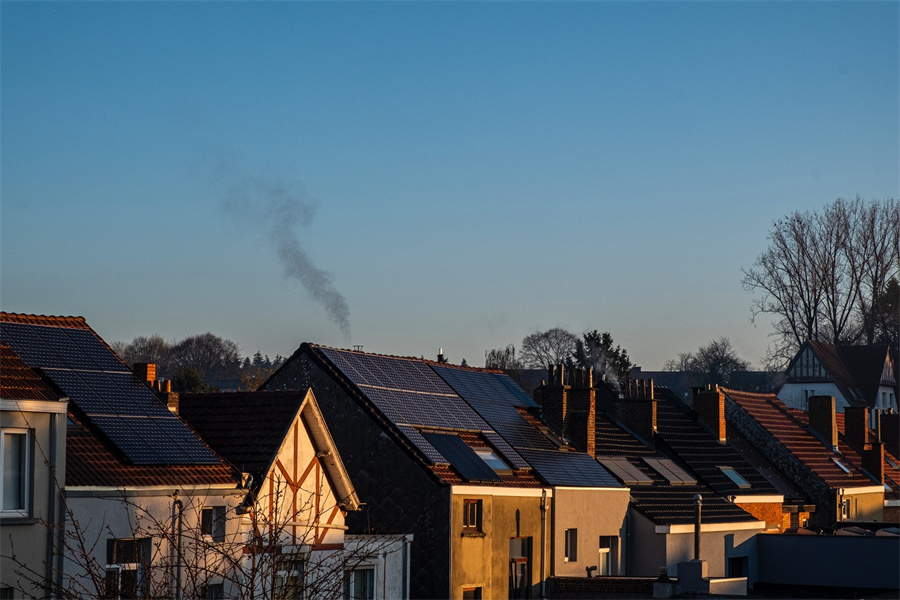The Clean Energy Future Is Arriving Faster Than You Think
time:2023-08-14 09:14:34 Views:0 author:Jinan Freakin Power Ltd.
The United States is pivoting away from fossil fuels and toward wind, solar and other renewable energy, even in areas dominated by the oil and gas industries.
Delivery vans in Pittsburgh. Buses in Milwaukee. Cranes loading freight at the Port of Los Angeles. Every municipal building in Houston. All are powered by electricity derived from the sun, wind or other sources of clean energy.
Across the country, a profound shift is taking place that is nearly invisible to most Americans. The nation that burned coal, oil and gas for more than a century to become the richest economy on the planet, as well as historically the most polluting, is rapidly shifting away from fossil fuels.
A similar energy transition is already well underway in Europe and elsewhere. But the United States is catching up, and globally, change is happening at a pace that is surprising even the experts who track it closely.
Wind and solar power are breaking records, and renewables are now expected to overtake coal by 2025 as the world’s largest source of electricity. Automakers have made electric vehicles central to their business strategies and are openly talking about an expiration date on the internal combustion engine. Heating, cooling, cooking and some manufacturing are going electric.
As the planet registers the highest temperatures on record, rising in some places to levels incompatible with human life, governments around the world are pouring trillions of dollars into clean energy to cut the carbon pollution that is broiling the planet.
The cost of generating electricity from the sun and wind is falling fast and in many areas is now cheaper than gas, oil or coal. Private investment is flooding into companies that are jockeying for advantage in emerging green industries.
“We look at energy data on a daily basis, and it’s astonishing what’s happening,” said Fatih Birol, the executive director of the International Energy Agency. “Clean energy is moving faster than many people think, and it’s become turbocharged lately.”
More than $1.7 trillion worldwide is expected to be invested in technologies such as wind, solar power, electric vehicles and batteries globally this year, according to the I.E.A., compared with just over $1 trillion in fossil fuels. That is by far the most ever spent on clean energy in a year.
Those investments are driving explosive growth. China, which already leads the world in the sheer amount of electricity produced by wind and solar power, is expected to double its capacity by 2025, five years ahead of schedule. In Britain, roughly one-third of electricity is generated by wind, solar and hydropower. And in the United States, 23 percent of electricity is expected to come from renewable sources this year, up 10 percentage points from a decade ago.

“The nature of these exponential curves sometimes causes us to underestimate how quickly changes occur once they reach these inflection points and begin accelerating,” said former Vice President Al Gore, who called attention to what he termed a “planetary crisis” 17 years ago in his film “An Inconvenient Truth.” “The trend is definitely in favor of more and more renewable energy and less fossil energy.”
Even as the pace of change in the United States is surprising everyone from energy experts to automobile executives, fossil fuels still dominate energy production at home and abroad.
Corporations are building new coal mines, oil rigs and gas pipelines. The government continues to award leases for drilling projects on public lands and in federal waters and still subsidizes the industries. After posting record profits last year, leading oil companies are backing away from recent promises to invest more heavily in renewable energy.
The scale of change required to remake the systems that power the United States — all the infrastructure that needs to be removed, re-engineered and replaced — is mind-boggling. There are major challenges involved in adding large amounts of renewable energy to antiquated electric grids and mining enough minerals for clean technologies. Some politicians, including most Republicans, want the country to continue burning fossil fuels, even in the face of overwhelming scientific consensus that their use is endangering life on the planet. Dozens of conservative groups organized by the Heritage Foundation have created a policy playbook, should a Republican win the 2024 presidential election, that would reverse course on lowering emissions. It would shred regulations designed to curb greenhouse gases, dismantle nearly every federal clean energy program and boost the production of fossil fuels.
And while energy systems are changing fast, so is the climate. It is far from certain whether the United States and other polluting countries will do what scientists say is required to avert catastrophe: stop adding greenhouse gases to the atmosphere by 2050. All of the investment so far has slowed the pace at which emissions are growing worldwide, but the amount of carbon dioxide pumped into the atmosphere is at record levels.
And yet, from Beijing to London, Tokyo to Washington, Oslo to Dubai, the energy transition is undeniably racing ahead. Change is here, even in oil country.




